Gladiolus flowers, with their towering spikes of vibrant blossoms, command attention in any garden. These elegant blooms—often referred to as glads—aren’t just visually striking; they also offer a fascinating backstory rooted in symbolism and horticultural expertise. Originating from southern Africa and boasting over 300 species, gladiolus can symbolize strength and integrity, making them more than mere eye candy in garden spaces. To embark on a successful path of growing these flowers, one must appreciate the conditions favourable for their thriving—not merely the aesthetics of the flower itself but also the intricate dance between climate, soil, and care required to bring out their full potential. The journey begins with selecting the right bulbs, understanding planting depth, and ensuring they receive adequate sunlight. As Susan Mulvihill notes in her review of The Ultimate Flower Gardener’s Guide, knowledge of specific flower characteristics is key to flowering success. Just like mastering the art of hybrid flower gardening, which is a popular topic among enthusiasts on forums like Reddit, growing gladiolus requires both scientific knowledge and a little bit of artistic intuition in order to cultivate stunning arrangements that reflect your personal style.
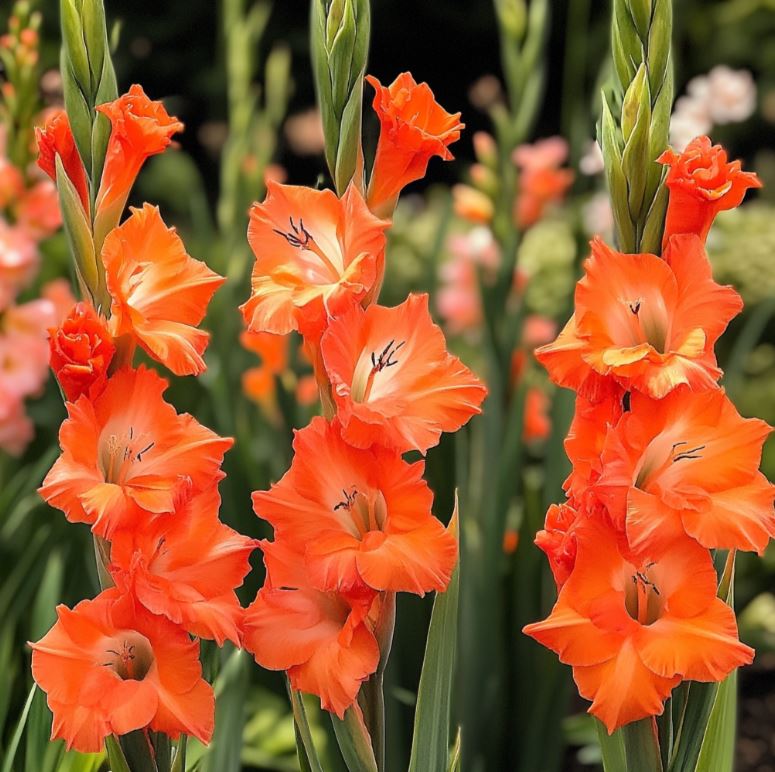
Choosing the Right Bulbs
When it comes to gladiolus, choosing the perfect bulbs is foundational. Look for firm, healthy bulbs without blemishes or signs of mold, akin to picking fruit at its peak ripeness. The quality of your bulbs can dramatically influence the vibrancy of your blooms. Varieties range from large-flowered cultivars to smaller, more delicate types, allowing for thoughtful selection based on your aesthetic preferences or coordinated landscaping. Additionally, sourcing locally-adapted varieties may yield better results, as they are likely better suited to your specific climate and soil conditions.
Identifying Healthy Bulbs
Selecting the right gladiolus bulbs is crucial for a successful growing experience. When inspecting potential bulbs, look for ones that are firm, plump, and free of any blemishes or soft spots. Avoid bulbs with signs of mold, rot, or damage, as these can compromise the plant’s vigor and overall performance.
Carefully examine the bulbs, ensuring they have a smooth, papery outer layer without any cracks or wrinkles. The size of the bulb can also be an indicator of its potential; larger bulbs generally produce more robust plants with larger flowers. However, it’s important to strike a balance, as overly large bulbs may not necessarily translate to superior blooms.
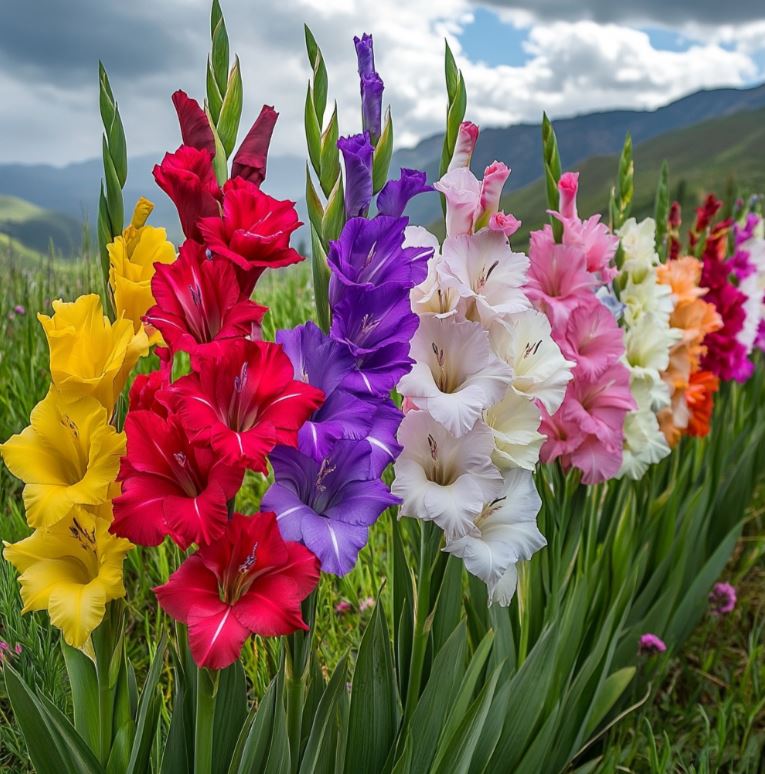
Selecting Appropriate Varieties
Gladiolus come in a wide range of sizes, shapes, and colors, allowing gardeners to choose varieties that best suit their preferences and growing conditions. Large-flowered cultivars, often referred to as “exhibition” or “show” types, are popular for their dramatic, attention-grabbing spikes. These varieties can reach heights of up to 4 feet (1.2 meters) and boast impressive, well-proportioned blooms.
On the other hand, smaller, more delicate gladiolus varieties, sometimes called “miniature” or “butterfly” types, offer a more graceful and delicate aesthetic. These compact plants, typically reaching 2-3 feet (0.6-0.9 meters) in height, can be ideal for smaller gardens or as accents within mixed flower beds.
When selecting varieties, consider factors such as bloom time, color, and growth habits. Some gladiolus varieties may be better suited to your local climate and soil conditions, so exploring locally-sourced or regionally-adapted options can be beneficial.
Sourcing Quality Bulbs
Procuring high-quality gladiolus bulbs from reputable sources is essential for a successful growing experience. Look for established nurseries, garden centers, or online retailers that specialize in bulbs and have a reputation for providing healthy, true-to-type specimens.
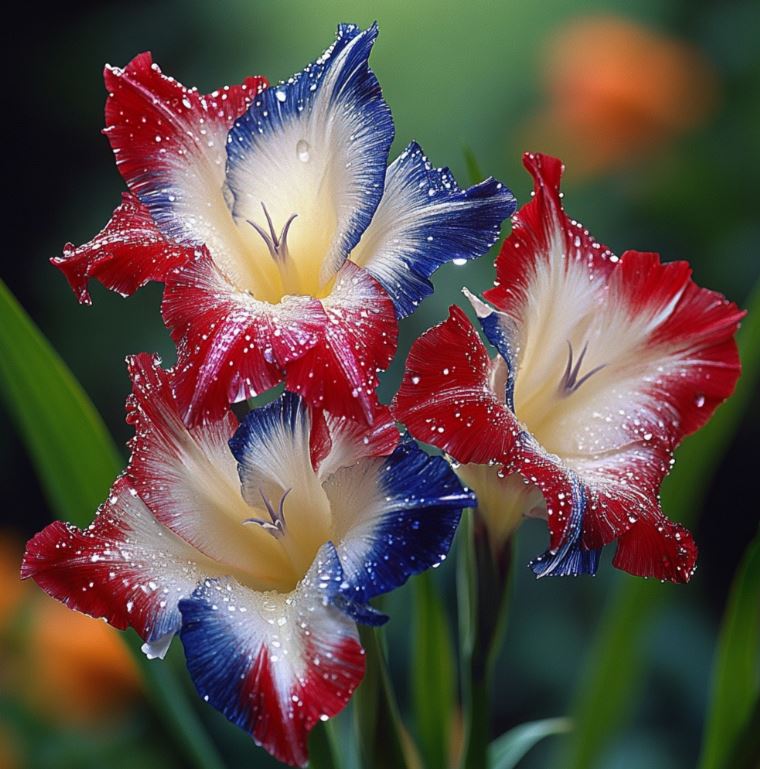
When ordering bulbs, pay attention to the seller’s reputation, reviews, and any guarantees or return policies they offer. Reputable suppliers will often provide detailed information about the varieties they sell, including bloom times, height, and color characteristics.
Purchasing bulbs locally or from growers within your region can be advantageous, as these bulbs are more likely to be adapted to your specific climate and soil conditions, increasing their chances of thriving.
Optimal Soil and Planting Conditions
Gladiolus thrive in well-drained soil rich in organic matter. To ensure this, consider amending your soil with organic compost or well-rotted manure. This creates an environment similar to their native habitat and helps with drainage while providing essential nutrients. It’s beneficial to conduct a soil test beforehand, as maintaining a pH balance of 6. 0 to 7. 0 is crucial. A garden bed that is heavily compacted or retains excessive moisture might lead to bulb rot—an unfortunate end to your planting efforts. The ideal time for planting is during the last frost when soil temperatures reach approximately 60°F (15°C), enabling the bulbs to establish roots in the warm, nutrient-rich soil.
Preparing the Soil
Gladiolus require a well-draining, nutrient-rich soil for optimal growth and flowering. Before planting, take the time to amend your garden bed with organic matter, such as compost or well-rotted manure. This not only improves soil structure and drainage but also provides the essential nutrients that gladiolus need to thrive.
Start by loosening the soil to a depth of 8-10 inches (20-25 cm) using a spade or tiller. This helps create a loose, aerated environment for the bulbs to establish their root systems. If your soil is heavy or tends to retain excessive moisture, consider adding sand or perlite to improve drainage.
Once the soil is prepared, conduct a soil test to determine the pH level. Gladiolus prefer a slightly acidic to neutral soil, with a pH range of 6.0 to 7.0. If necessary, amend the soil with lime or sulfur to adjust the pH to the optimal range.
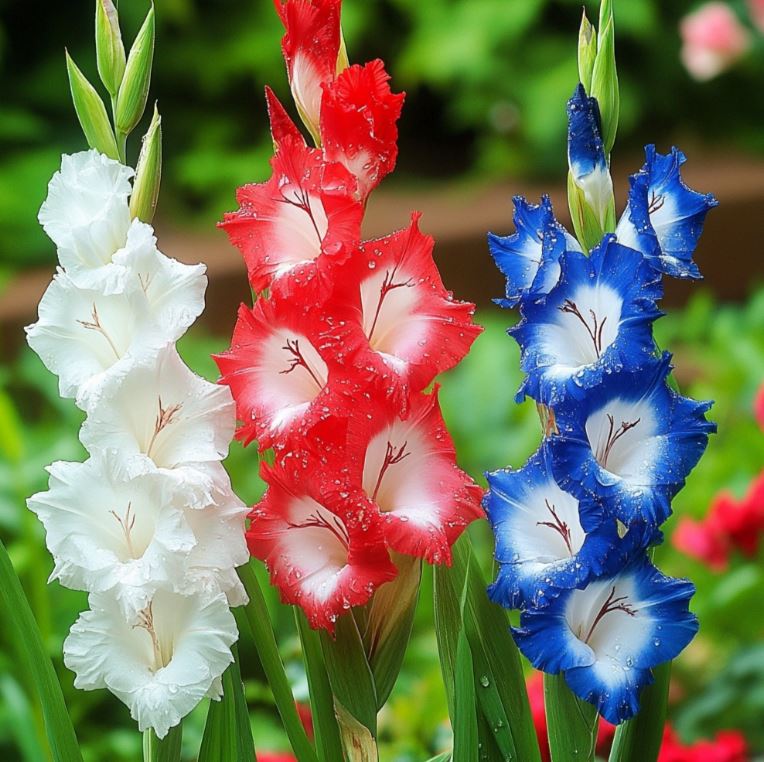
Planting Depth and Spacing
Planting gladiolus bulbs at the right depth is crucial for their success. As a general guideline, plant the bulbs 4-6 inches (10-15 cm) deep, measuring from the top of the bulb to the soil surface. This depth provides the bulbs with adequate protection from the elements and allows for the development of a strong root system.
When it comes to spacing, gladiolus should be planted 6-8 inches (15-20 cm) apart from each other, with rows spaced 12-18 inches (30-45 cm) apart. This spacing allows for good air circulation around the plants, reducing the risk of disease and ensuring proper development of the foliage and flowers.
It’s important to note that planting depth and spacing may need to be adjusted based on your specific climate and soil conditions. In colder regions, you may want to plant the bulbs slightly deeper to protect them from frost heaving. Conversely, in warmer climates, a slightly shallower planting depth may be more suitable.
Timing and Planting Conditions
The optimal time to plant gladiolus bulbs is typically in the spring, after the last frost has passed and the soil has warmed up to around 60°F (15°C). This timing allows the bulbs to establish their root systems and prepare for the upcoming growing season.
When planting, ensure that the soil is well-drained and not waterlogged. Gladiolus are susceptible to rot if left in soggy conditions, so it’s essential to choose a site that offers good drainage or consider amending the soil to improve its structure.
After planting, water the bulbs thoroughly to help them settle into the soil. Avoid overwatering, as this can lead to bulb rot and other issues. Monitor the soil moisture regularly, and adjust your watering schedule as needed, especially during dry spells.
Sunlight and Watering Strategies
Gladiolus require full sun, thriving in areas that receive at least six hours of direct sunlight daily. Positioning these lofty flowers in optimal light promotes robust growth, akin to giving a solar charging station ample sunshine to supercharge devices. However, while sunlight is vital, proper watering practices are equally important. Gladiolus cannot withstand waterlogged conditions; the mantra here is, less is more. Ensuring that the soil dries out slightly between waterings will promote healthy root systems. During dry spells, you may need to increase watering frequency, but always remain attuned to the soil’s conditions to avoid over-saturation.
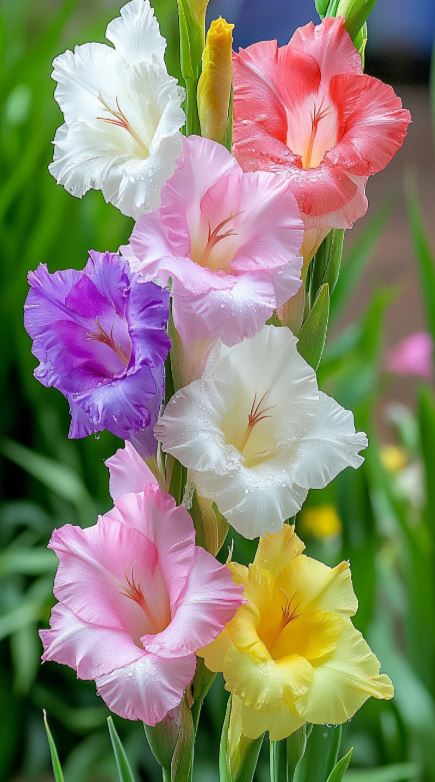
Sunlight Requirements
Gladiolus are true sun-lovers, requiring a minimum of 6 hours of direct sunlight per day to thrive. Positioning your gladiolus plants in a location that receives full sun exposure, such as a south-facing garden bed or border, will ensure they receive the necessary light intensity for robust growth and abundant blooms.
Adequate sunlight not only promotes overall plant vigor but also plays a crucial role in the development and vibrant coloration of the flowers. The energy from the sun fuels the photosynthesis process, allowing the plants to produce the nutrients and pigments that contribute to the striking hues and large, showy blossoms that make gladiolus such a popular choice in gardens.
In areas with partial shade, the gladiolus may struggle to reach their full potential, producing smaller, less vibrant flowers and potentially exhibiting leggy or weak growth as they strive to reach for the available sunlight. Carefully consider the sun exposure of your planting site and make adjustments if necessary to ensure your gladiolus receive the optimal amount of direct sunlight throughout the day.
Watering Requirements
Proper watering is essential for the success of gladiolus plants. These flowers are sensitive to both over-watering and under-watering, so finding the right balance is crucial.
Gladiolus thrive in well-drained soil that allows the root system to dry out slightly between waterings. Aim to keep the soil consistently moist, but not waterlogged. During periods of active growth and flowering, the plants will require more frequent watering, typically about 1-2 inches (2.5-5 cm) of water per week, either from rainfall or irrigation.
However, it’s important to pay close attention to the soil conditions and adjust your watering schedule accordingly. Overwatering can lead to bulb rot, while underwatering can cause the foliage and flowers to wilt and decline.
During hot, dry spells, you may need to increase the watering frequency to ensure the soil doesn’t completely dry out. Conversely, in cooler, wetter weather, you may need to reduce the amount of water or increase the time between waterings.
To maintain optimal soil moisture, consider using a moisture meter or simply checking the soil by sticking your finger into the ground. If the top inch or two of soil feels dry, it’s time to water. Avoid watering in the evening, as this can promote fungal growth, and instead, water in the morning or afternoon to allow the soil to absorb the moisture before nightfall.
Fertilization and Care
As documented not only in gardening magazines but community discussions as well, providing gladiolus with balanced fertilizer during their active growth phase can enhance bloom size and color intensity. A granular 10-10-10 fertilizer applied every 4-6 weeks is often recommended. In addition to fertilization, be vigilant about removing spent flowers, or deadheading. This encourages further blooms and directs energy back into the bulb rather than into seed production—a common theme in cultivation advice for various floral species.
Fertilization Strategies
Gladiolus are heavy feeders, and providing them with the right nutrients can significantly improve the size, color, and longevity of their blooms. A balanced, granular fertilizer with a ratio of 10-10-10 or 12-12-12 is an excellent choice for these plants.
Apply the fertilizer every 4-6 weeks during the active growing season, starting from the time the plants begin to emerge from the soil and continuing until the flowers have fully bloomed. This consistent feeding schedule ensures that the gladiolus have access to the essential nutrients they need to thrive.
When applying the fertilizer, be mindful of the recommended application rates and distribute it evenly around the base of the plants, avoiding direct contact with the foliage or flowers. Water the soil thoroughly after fertilizing to help the nutrients penetrate and become available to the root system.
In addition to the scheduled fertilizer applications, you can also supplement your gladiolus with a water-soluble, bloom-boosting fertilizer during the peak flowering period. This can provide an extra boost of nutrients to support the development of larger, more vibrant blooms.
Deadheading and Maintenance
Deadheading, the process of removing spent flowers, is an essential maintenance task for gladiolus. This simple yet effective practice not only keeps your garden looking tidy but also encourages the plant to direct its energy towards producing additional blooms rather than seed production.
As the individual florets on the gladiolus spike begin to fade, use sharp, clean pruners or scissors to snip off the spent flowers, cutting just above the next set of healthy, unopened buds. This process should be done regularly, as new flowers continue to open up the spike.
In addition to deadheading, it’s important to keep an eye out for any signs of pests or diseases that may affect your gladiolus. Promptly remove any damaged or diseased foliage or flowers, and consider using organic or low-toxicity pest control methods to maintain the health and vigor of your plants.
Staking or providing support for the tall gladiolus stems can also be beneficial, especially in areas prone to strong winds or heavy rain. This helps prevent the plants from toppling over and ensures the flowers remain upright and visible.
By diligently maintaining your gladiolus plants through deadheading, pest and disease management, and occasional staking, you can extend the flowering period, encourage more blooms, and showcase these magnificent flowers in all their glory.
Hybrid Approaches
For those adventurous spirits looking to breed their own gladiolus hybrids, understanding genetic principles is critical. Much like the experimental plant breeding detailed in user-driven discussions on Reddit, careful selection of parent plants based on desired traits, such as color or height, can lead to unique and picturesque results. Exploring hybridization mirrors the meticulous processes that garden writers dissect in depth through various publications, including guides on accompanying plant species that could enhance or potentially hinder the growth of your beloved glads. Imagine creating your own signature variety, a testament to your dedication and botanical creativity!
Genetic Principles for Hybridization
The art of gladiolus hybridization requires a deep understanding of genetic principles and the inherent traits of different cultivars. By carefully selecting parent plants based on desired characteristics, such as bloom color, size, or growth habit, gardeners can create unique and captivating hybrid gladiolus varieties.
The fundamental concept behind successful hybridization is the controlled pollination of the selected parent plants. This involves manually transferring pollen from the anthers of one plant to the stigma of another, allowing the genetic material to combine and produce new, novel offspring.
When choosing parent plants, consider factors like dominant and recessive genes, as well as the potential for traits to blend or segregate in the resulting hybrids. Experimenting with contrasting or complementary characteristics can lead to unexpected and delightful outcomes, expanding the diversity of your gladiolus garden.
It’s important to maintain meticulous records throughout the hybridization process, tracking the parentage, bloom times, and other key details. This not only helps you understand the genetic lineage of your new creations but also allows you to refine your breeding strategies over time.
Selecting Desirable Traits
The myriad of gladiolus cultivars available provides a wealth of opportunities for selective breeding and hybridization. As you embark on your own hybridization journey, carefully consider the traits you wish to prioritize, such as:
Bloom Color: From vibrant reds and purples to delicate pastels and bicolors, the color palette of gladiolus is truly diverse. By crossing plants with complementary or contrasting hues, you can produce unique color combinations that stand out in the garden.
Flower Size and Form: Gladiolus come in a range of flower sizes, from large, dramatic blooms to more petite, delicate forms. Experiment with combining different flower sizes and petal shapes to create visually captivating hybrids.
Plant Height: Gladiolus varieties can range from compact, dwarf types to towering, architectural specimens. Selecting parent plants with varying heights can lead to hybrids that offer versatility in garden design and planting schemes.
Bloom Time: By crossing early-, mid-, and late-blooming gladiolus cultivars, you can extend the flowering season and create a continuous display of color in your garden.
As you engage in the process of hybridization, be prepared to experiment, observe, and document your findings. The joy of creating your own signature gladiolus varieties can be immensely rewarding, allowing you to leave a lasting imprint on the world of these captivating flowers.
Conclusion
Cultivating gladiolus combines both science and artistry, inviting gardeners of all skill levels to experiment and express themselves through their gardens. From selecting the right bulbs and optimizing soil conditions to contemplating discussions around hybridization, there’s a world of possibility waiting to flourish in your own backyard. By understanding the nuances of growing these majestic flowers, you can unlock their full potential and create stunning displays that capture the essence of your personal gardening style. Whether you’re a seasoned horticulturist or




